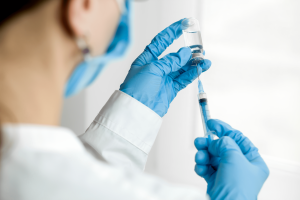Due to the increase in the percentage of adults of 65 years and older, a population that is more vulnerable to infections due to a decline in immune responses with ageing (immunosenescence), the number of people with severe infectious disease-related health problems is increasing. Vaccines are one of the most effective means to protect against different infections. However, the responses to vaccines in elderly may vary considerably.
The VITAL vaccination study executed within WP2 was designed to investigate vaccine-induced immune responses after two different vaccinations (influenza subunit vaccine (influenza) and pneumococcus vaccine (PCV13)) in three age groups: young (25-49), middle-aged (50-64) and older adults (65+). Our primary objective was to identify responders and non/hypo-responders based on serum antibody levels in this cohort against these two vaccines. To this end we measured influenza antibody levels using HAI assays and PCV13 strain specific antibody levels using a multiplex immuno-assay pre and 28 days post-vaccination.
Based on the classical definition of responders for influenza vaccination, approximately 60% of the study population responded to influenza vaccination with the H3N2 strain, with no difference between age groups. Classification of PCV13 responders at day 28 was more difficult, as this has not been done previously. First of all, Seroprevalence after vaccination could not be used since for several serotypes antibodies were already present at baseline due to continuous circulation of these serotypes. Second of all, the vaccine used consisted of 13 serotypes and each serotype induced a different antibody response providing a challenge for a general responder profile. Two different PCV13 responder profile scenario’s were tested. Neither of these, or the serotype specific antibody levels correlated with the influenza vaccine response profile. Interestingly at day 7 post vaccination older individuals had lower antibody titers as well as a lower combined measure for the number of serotypes they responded to, suggesting a delayed response to vaccination.
These data indicate that more knowledge is required on antibody profiles after vaccination consisting of multiple components. This knowledge is needed in the search for predictors of vaccination responses.




